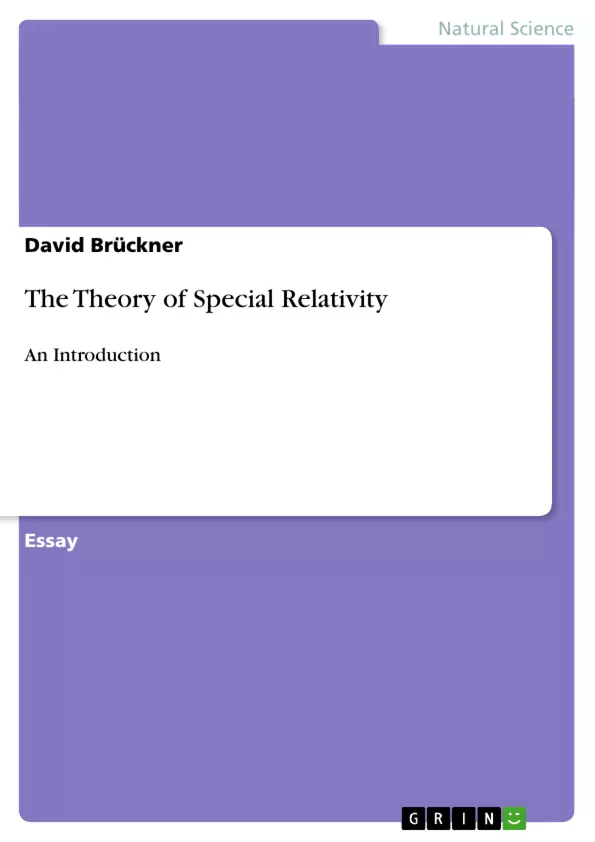The essay presents an intuitive approach to the basics of special relativity, leading to a mathematical understanding of Lorentz transformations, relativistic dynamics and mass-energy equivalence.
Until the end of the nineteenth century, the simple Galilean principle of relativity was used to relate physical observations in one frame of reference to another moving relative to it. When the phenomena of electromagnetism and light where unified in Maxwell’s equations, this principle was first called into question as it stood in conflict with the idea of absolute time and motion. The most famous experiment that attempted to determine the absolute motion of the earth, the Michelson-Morley experiment, will be discussed here. Subsequently, the ideas and postulates contained in Einstein’s first paper on relativity will be introduced and hence the kinematic transformations based on the principles will be derived and their implications on the relativity of space and time as well as on Newtonian mechanics will be stated.
Inhaltsverzeichnis (Table of Contents)
- Galilean Invariance
- The Michelson-Morley Experiment
- Einstein's Postulates
- The Lorentz Transformations
Zielsetzung und Themenschwerpunkte (Objectives and Key Themes)
This text aims to discuss the development of the theory of special relativity, highlighting the shortcomings of Galilean invariance and the pivotal role of the Michelson-Morley experiment in questioning the notion of absolute time. It delves into Einstein's postulates, laying the foundation for a new kinematic framework.
- Galilean relativity and its limitations in the context of electromagnetism
- The Michelson-Morley experiment and its implications for the concept of a luminiferous aether
- Einstein's postulates of special relativity, particularly the constancy of the speed of light
- The Lorentz transformations as a foundation for understanding the relativity of space and time
- The implications of special relativity for Newtonian mechanics
Zusammenfassung der Kapitel (Chapter Summaries)
Galilean Invariance
This chapter introduces the principle of relativity as formulated by Galileo, emphasizing the invariance of physical events in different inertial frames. It discusses the Galilean transformation and its consistency with Newtonian mechanics. It also explores the limitations of the Galilean principle when applied to electromagnetism and Maxwell's equations.
The Michelson-Morley Experiment
This chapter delves into the famous Michelson-Morley experiment, designed to detect the absolute motion of the Earth through a hypothetical aether. It outlines the experimental setup and the expected interference pattern based on Galilean relativity. The chapter concludes by highlighting the experiment's unexpected result—the absence of any interference—which challenged the existence of the aether and the validity of Galilean invariance.
Einstein's Postulates
This chapter examines the challenges posed by the Michelson-Morley experiment and explores various attempts to reconcile the results with classical physics. It introduces the concept of length contraction proposed by Lorentz and Fitzgerald. The chapter emphasizes Einstein's groundbreaking contribution in his 1905 paper, which laid the foundation for special relativity. Einstein's two postulates, the equivalence of inertial frames and the constancy of the speed of light, are introduced as key principles of the theory.
Schlüsselwörter (Keywords)
This text focuses on the concepts of Galilean invariance, the Michelson-Morley experiment, Einstein's postulates of special relativity, the constancy of the speed of light, and the Lorentz transformations. It explores the implications of these concepts for the understanding of space, time, and the laws of physics.
- Arbeit zitieren
- David Brückner (Autor:in), 2012, The Theory of Special Relativity, München, GRIN Verlag, https://www.hausarbeiten.de/document/206888


